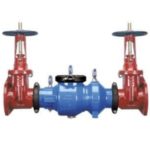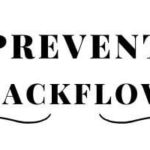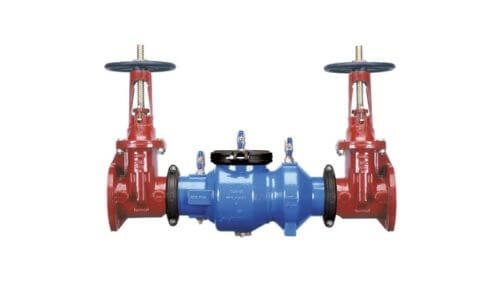
Who Needs Backflow Testing?
At the end of a hot summer day, most people are ready for a nice glass of cold water. Filling a drinking glass at the kitchen sink with clean, clear, drinkable water is something many take for granted. But if the water comes out discolored - brown, yellow, or even pink - cooling off will suddenly be the least of your concerns. That discolored water could indicate an emergency issue with your home or business’ plumbing.
Drinking contaminated water poses serious health risks. Luckily, annual backflow testing can help prevent these issues. Read on to learn more about backflow testing, and what home and business owners should do.
The Health Risks of Backflow
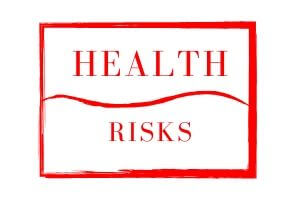 In order to understand the urgency of backflow, you need to know what backflow is. Most plumbing systems, both residential and commercial, are designed to utilize water pressure to ensure that water only flows in one direction.
In order to understand the urgency of backflow, you need to know what backflow is. Most plumbing systems, both residential and commercial, are designed to utilize water pressure to ensure that water only flows in one direction.This prevents dirty water (like used water from a toilet, dishwasher, or irrigation system) from mixing with clean water and coming out through a faucet.
If something happens to cause an increase or decrease in the water pressure, backflow prevention can fail, and dirty water can mix with the drinking water entering the property. As it can come from any number of places where dirty water is drained, including the toilet, backflow can contain chemicals or even human waste.
Exposure or consumption of this contaminated water poses serious health risks. Examples of possible contaminants, per the EPA, are E Coli, Salmonella, and the Norwalk family of viruses, among others. Luckily, homeowners can prevent backflow and its associated health risks with an annual check by a professional.
How to Prevent Backflow
As mentioned above, a change in the property’s water pressure can lead to backflow. An increase in pressure is called backpressure, and a decrease back siphonage is a decrease in pressure. These changes in pressure can be caused by a few different things, including:
- Broken Water Main
- Extended Power Outage
- Nearby Emergency Water Use
From the list above, it may seem impossible to prevent backflow, as it is usually caused by emergencies beyond control. However, having a backflow preventer installed on the property, and having annual backflow testing done by a professional are both ways to ensure that even in the event of emergencies, your home or business is protected.
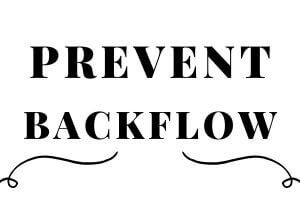
What to Do If There Is Backflow
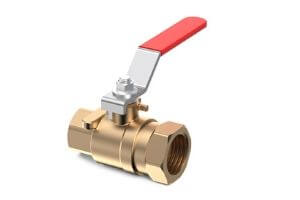 The most common places for backflow to occur are the kitchen and the bathroom because both of these areas have plumbing with cross-connections. If you have a backflow problem, this is what to do:
The most common places for backflow to occur are the kitchen and the bathroom because both of these areas have plumbing with cross-connections. If you have a backflow problem, this is what to do:- Close the Water Valve
- Contact a Professional Plumber Immediately
- Boil Water for Use Until the Necessary Repairs Have Been Made
Backflow should always be treated as an emergency, due to the health risks it can present. Once the emergency has been resolved, discuss your options for installing a backflow preventer, and schedule an annual visit for backflow testing, to prevent this from happening again in the future.
About First Choice Plumbing Solutions
First Choice Plumbing Solutions offers dependable services and innovative solutions for their customer’s plumbing needs. They are available for Port St. Lucie residents needing plumbing help. Same day service with a 1-hour service window means all plumbing emergencies are handled urgently, with the customer’s needs and comfort as a priority.
Distribution Links +
- wrcbtv.com
- erienewsnow.com
- kake.com
- magic1065.com
- lubbocks969thebull.com
- fox21delmarva.com
- wicz.com
- telemundolubbock.com
- wboc.com
- tulsacw.com
- weny.com
- 1007thescore.com
- doublet973.com
- 937theeagle.com
- fox34.com
- lubbockcw.com
- mylubbocktv.com
- oldies977lubbock.com
- 1077yesfm.com
- rfdtv.com
- ktvn.com
- wfmj.com
- htv10.tv
- snntv.com
- central.newschannelnebraska.com
- metro.newschannelnebraska.com
- southeast.newschannelnebraska.com
- midplains.newschannelnebraska.com
- northeast.newschannelnebraska.com
- plattevalley.newschannelnebraska.com
- panhandle.newschannelnebraska.com
- rivercountry.newschannelnebraska.com
- wrde.com
- telemundonuevomexico.com
- wfxg.com

